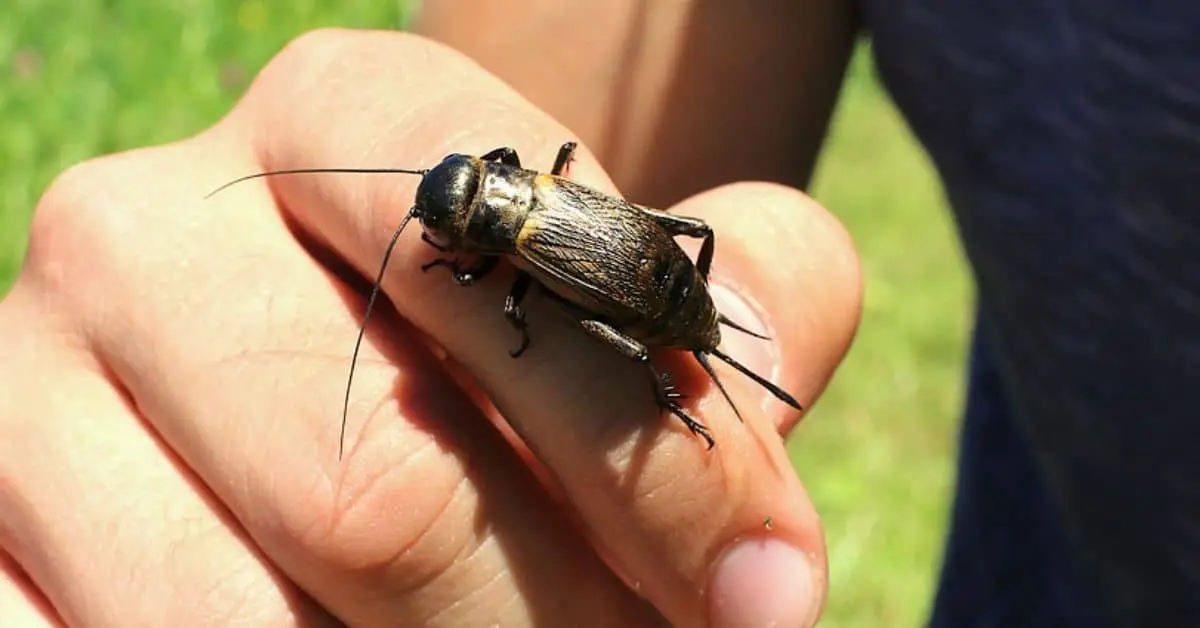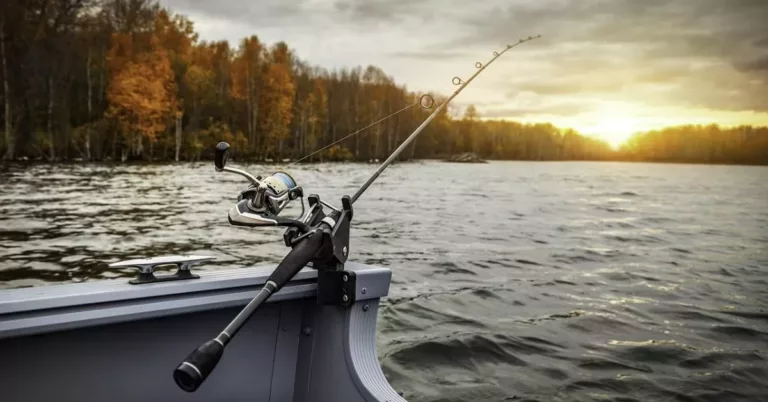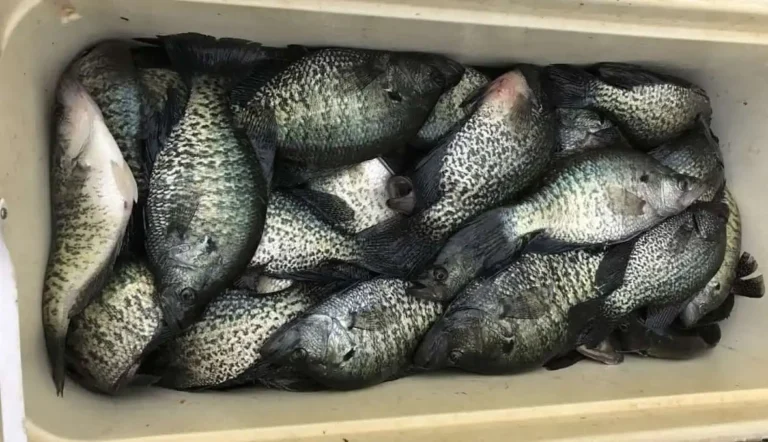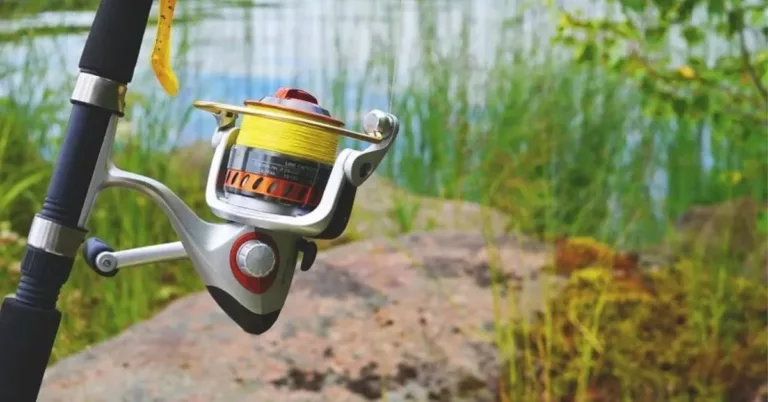Two Ways to Hook a Live Cricket That Will Improve Your Fishing

One of the best baits for fishing from a bank, whether it be a river, lake or stream is live crickets.
Whether you are hoping to catch bream, bluegill, crappie, trout, or even bass, most fish species will readily go after crickets as they are a food source that frequents their diets.
Often the fish will hang near the edges of the water around roots, rocks, and stumps in the hopes that a stray insect or cricket falls into the water. This is what makes live crickets a great option.
Baiting your hook with a live cricket is a relatively simple task. Moreover, if you aren’t bothered by the feel of insect legs, a far less messy option than live worms.
With that being said let’s look at two methods to rig your hook with a live cricket.
Optimal Setup for Fishing With Crickets From the Shore
Setting up your rod for fishing with crickets is straightforward and probably the first setup most anglers learn. This setup consists of a rod, float, small weight, and hook. Pretty much the most basic of fishing tackle.
The items you will need for this setup:
- Rods
- Lightweight Line
- Float or Bobber
- Splitshot
- Hooks
- Cricket Box
Required Gear and Price Check Links for your Convenience
| Rods | Amazon | Cabelas | Walmart |
| Lightweight Line | Amazon | Cabelas | Walmart |
| Float or Bobber | Amazon | Cabelas | Walmart |
| Splitshot | Amazon | Cabelas | Walmart |
| Hooks | Amazon | Cabelas | Walmart |
| Cricket Box | Amazon | Cabelas | Walmart |
Rods – for this any type of rod or rod&reel combo will likely work. For bank fishing streams and small rivers, I prefer a bream buster or magic pole as my kids call it. Though any inexpensive rod can be used since cast distances will be relatively short.
Lightweight line – Often you are going to be catching what many people refer to as panfish when fishing with crickets. Panfish are any of the species that can fit into a pan in one piece. This means a line between 4 and 8 pounds is sufficient. It doesn’t matter if you use monofilament or braided line at these weights, though I prefer a braided line myself.
Float or Bobber – I would say that any float or bobber will work, but that isn’t quite true. Pick either a red and white plastic bobber in a 1” size or a styrofoam float around 1 ½” to start with. Either of these will provide sufficient flotation but allow the fish to pull it under easily.
Splitshot – Often referred to as sinkers or lead, split shot is a weight that features a split on one side, you can clip it onto your line with a pair of pliers, (or your teeth, but I don’t recommend this). The split shot helps to improve your cast range, though in this style of fishing it’s more to help position the bait at the desired depth.
Hooks – While any type of hook will work, Aberdeen Hooks tend to work great. Something around a #4 to #6 works great. You can pick them up at nearly any location that sells fishing gear and they feature a long shank that will allow you to properly hook the cricket.
Now that we have discussed the equipment you need, here are two examples of how to hook a live cricket on this setup.
Rigging a Cricket on a Hook So That It Stays Alive Longer – Shallow Hook Method
One of the things that make crickets work so well as bait is their thrashing around trying to escape, this movement draws the attention of the fish and a live cricket is far more likely to draw a strike than a dead one.
With that in mind, the first technique of baiting a hook with a cricket attempts to prolong the life of the cricket.
In this method, you are going to hold the cricket firmly in one hand. Have the cricket’s belly facing the palm of your hand while its back is away from your hand. Now grasp the hook with your other hand.
As you look at the cricket from the back, you will see the head, a collar-looking piece just below that, and then the wings and body of the cricket. You will need to insert the tip of the hook just behind the head of the cricket slipping it under this collar feature.
While doing so be careful not to squish the cricket and barely insert the hook so it just slides under the collar, do not bury it into the fleshy body beneath this collar.
Slide the hook about a quarter-inch down the back of the cricket and then come out just past the collar turning the hook as you do so that way the cricket slides to the long shaft of the hook.
This collar portion is a part of the shell and by maintaining the shallow puncture you can keep the cricket alive and moving for as long as possible. This makes it a much more appetizing target for the hungry fish you hope to attract.
Best Times to Use the Shallow Behind-The-Head Hooking Technique
When using shallow hooking with crickets They tend to work best near the surface. If you see fish hitting the surface to feed then this is an ideal time to toss them a cricket.
Additionally, you can often see fish below the surface, if you can see them and determine that at least a portion appears to be the size of your hand or larger then this technique will work great.
Often if using a bream buster you can use just a hook and cricket on the line and allow the cricket to float on the surface.
The Drawback to Shallow Hooking a Cricket
As we discussed the advantage to shallow hooking a cricket is the longer life and ability for the cricket to move around and attract more fish.
There is a drawback to this method though. In reality, a cricket is fairly fragile. It is relatively simple for fish to strip most of the cricket off in pieces after just a hit or two when rigged on the hook in this manner.
This becomes a real problem when dealing with smaller fish that may not be able to bite the hook or are willing to commit to a solid strike. In these cases, it may be better to move on to the second method of hooking a cricket.
Baiting a Hook With a Cricket to Keep It on the Hook Through Multiple Strikes – Through The Body
When you are dealing with smaller fish, or fish that are feeding regardless of the state of the cricket then you can take an approach that keeps the cricket on the hook more securely.
In this method of baiting the hook, you can hook the cricket either from the front or backside. Insert the hook just below the head again, however, maneuver it into the center of the body and bring the tip all the way through the cricket length-wise.
Then slide the cricket around to the longer side of the Aberdeen hook shaft. I prefer to turn the hook so that the curve of the hook is on the same side of the cricket as the legs, this will help to conceal the hook.
The Best Time to Hook a Cricket Through the Body
When dealing with smaller target fish, fish that are feeding on anything that falls into the water, or when your crickets are already dead, then hooking them through the body and firmly securing them is the best bet.
This will help to keep portions of your cricket in place through several strikes from the feeding fish.
The Drawback to Hooking a Cricket Through the Middle of the Body.
The main drawback to this method of hooking a cricket is that it almost always means the cricket is dead in just a few seconds. This may result in fewer strikes when the fish are picky about what they are going to eat.
Why You Should Not Hook a Cricket Through Just the Abdomen
While it may seem easier to just hold the cricket and slip the hook into it in the fleshy tail or abdomen area, this is not ideal.
This portion of the cricket is the most fragile and often just the act of throwing your line into the water can cause the cricket to fly off of the hook.
If the cricket remains on the hook then the first strike from a fish is likely to pull the cricket loose. This method will also likely kill the cricket in just a minute or so losing any of the advantages provided by shallow hooking the cricket.
Conclusion to How to Hook a Live Cricket
Whether you choose to hook a cricket using a shallow hook or a through hook, one thing remains the same, Crickets make excellent bait for nearly any freshwater fish that feeds near the surface.
Using a simple float rig and cricket can lead to some excellent fishing when you find yourself on a creek or river bank. With this one simple setup, you could potentially catch perch, bream, bluegills, bass, crappie, and any other number of sunfish/panfish species.
Make sure to check out my article on some of the top baits for crappie fishing.






